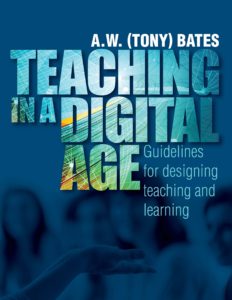A cMOOC v. an xMOOC
(cMOOCs and xMOOCs are defined
here by Stephen Downes)
This is DS106 v. an iversity course also called digital storytelling.
This blog was supposed to be comparing one of the original xMOOC platforms with DS106, but instead I decided to compare an equivalent platform offering a similar subject. I was more interested in the treatment of the subject and pedagogy being the main focus of the comparison rather than the technology, but nevertheless….
the technology, just to get this out of the way:
DS106 is built using a WordPress (WP) content management system (CMS). Highly modular with lots of addons available, WP allows anyone with a modicum of web development experience to build as complicated a network of websites as they want. And DS106 has become a pretty deep website, with many offshoots and choices for visitors (including a link for teachers who want to use the resources as an OER source for their own courses).
iversity is a MOOC platform built specifically for this purpose and generally mirrors others like Udacity, FutureLearn and Coursera. The major difference is that this one was built in, and operates from, Germany, though it still uses English as its language.
Another major difference is that iversity offers academic credit in the form of European credit transfer (ECTS) where as DS106 does not, in the traditional sense of the word.
iversity courses appear to be led by Professors, only, though there are seven people in the storyMOOC team and twelve visiting guest lecturers. This even differs from many of the other xMOOCs. But now at least we are getting closer to looking at the teaching.
DS106 is designed as a way to enable students to learn about digital storytelling by reading/watching/listening to background material and then telling stories digitally. They set their own assignments, they choose their own methods and there doesn’t appear to be anyone in charge, in fact one of the original pathways is even called “headless DS106”. The only thing that we know for certain is that the idea originated at the University of Mary Washington and was created by Jim Groom, after that it appears to have taken on a life of its own. An ongoing environment that continues to grow within a structure without dates and times “The Open DS106“. This course has become the standard bearer for a connectivist approach to teaching online. This is because it relies on the connections between and experience of the people undertaking the course itself in order to progress the students.
Both courses have a curriculum: DS106 has 12 Units (open ended), iversity has 8 chapters (based on weeks of study).
ds106
|
iversity
|
| 1: Bootcamp |
storytelling basics |
| 2: Getting Through Bootcamp / Personal Cyber Infrastructure |
– serial formats (on the TV, web and beyond) |
| 3: What Mean Ye Digital Storytelling? |
– storytelling in role-playing games |
| 4: Listening to Audio |
– interactive storytelling in video games |
| 5: Telling Stories in Photos |
– transmedia storytelling |
| 6: It’s All By Design |
– alternate-reality gaming |
| 7: Advanced Audio And Radio Show Production |
– augmented reality and location-based storytelling |
| 8: Telling Stories Within the Web |
– the role of tools, interfaces and information architectures in current storytelling. |
| 9: Reading Movies |
|
| 10: Making Movies |
|
| 11: ximeR and M@$#up |
|
| 12: Final Projech |
|
The major superficial difference between these two curricula are that one appears to be more embedded in an academic framework, in particular it is using academic language to convey what might arguably, be pretty similar material. But there is little doubt that ds106 is all about doing, producing, experimenting and learning that way. iversity requires listening and watching the experts telling the students about the subject. iversity also broadcasts via Facebook and also had a twitter feed which attracted 323 followers. DS106 seems to have completely avoided Facebook but has several hashtag feeds, each focussing on a different aspect of the module (making a numerical comparison a little more difficult). Perhaps this is because it is not person centric so therefore there is no one leader to follow. @dsradio has over 500 followers, @ds106 a couple of hundred and @ds106dc nearly 700.
The general approach and philosophy of ds106 seems to really have a life of its own, it is revelling in creativity and that creativity is exemplified by its own approach to teaching, assessment (peer) and openness. There is little doubt that iversity’s storyMOOC is also celebrating creativity, but its approach is steeped in its own appraisal of that creativity, this contrasts strongly with the overwhelming sense of joy that participants in ds106 appear to be experiencing. This surely is what learning should be about?
 The English version is available for reading in the following versions:”
The English version is available for reading in the following versions:”

